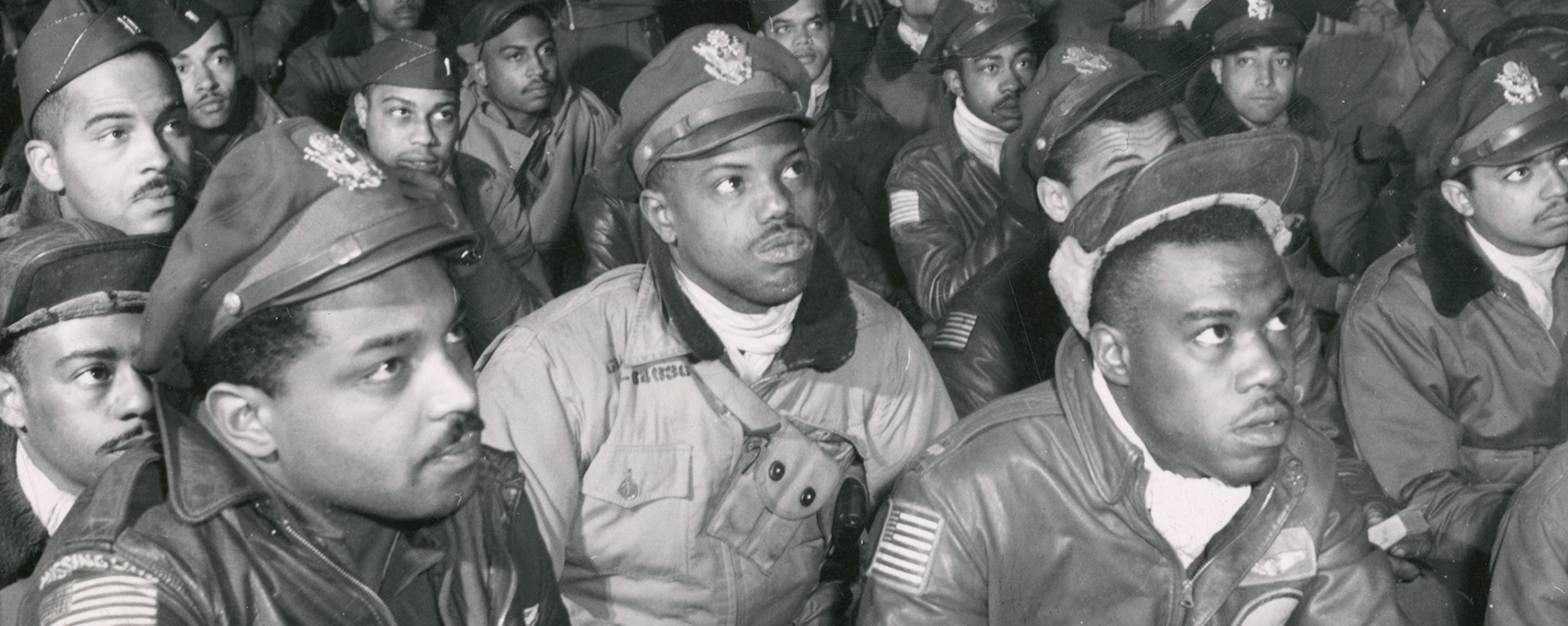Double Victory: Putting Real History On Screen
The Original Documentary Crew Share Their Story of the Film’s Creation
An idea that originated with George Lucas, Double Victory: The Tuskegee Airmen at War (2012) was made as a companion documentary to Red Tails (2012). The team that created it had originally been established by Lucasfilm to make short educational films on the historical subjects portrayed in The Adventures of Young Indiana Jones television series. 94 productions later, they began work on Double Victory, their first self-contained feature film project.
“We began the film simultaneously with the research for Red Tails,” explains senior producer Sharon Wood, “so that any information that we could come up with would be useful for Red Tails in terms of authenticity and details.” Where Red Tails would adapt history as an action war story, Double Victory would portray real lives, exploring the experiences of the Tuskegee Airmen, from training to homecoming.
From their offices at the Stable House at Skywalker Ranch, research continued. “The key change [from Young Indiana Jones] was having time to delve into the history and find the media to build the film,” explains senior producer David Schneider. “Nothing takes the place of having time to think and explore the stories and storytelling.”
Beginning in 2007, Lucasfilm crews met with and interviewed veterans at annual Tuskegee Airmen conventions. The team then traveled around the country and interviewed many in their homes. “Just listening to them speak, I felt so honored,” remembers Sharon Wood. “They were such amazing heroes and very matter-of-fact about what they accomplished.”
One such Airman visited by the crew was Roger “Bill” Terry (1921-2009), who had refused to accept an unjust rule barring African-Americans from entering the officers’ club at Freeman Field, Indiana in 1945. Terry was court-martialed, and the only one to be convicted. Sharon Wood laments that, due to his resulting service record, Terry was unable to pursue his aspiration to become a lawyer. “He worked in a legal firm, but he was never allowed to become a lawyer,” she explains. Terry remained proud of his actions during the war, and his record was officially cleared in 1995.
As work continued on both the documentary and Red Tails, some Tuskegee Airmen visited Skywalker Ranch. “They shared their personal photo albums, clarified our research about life on base, and answered questions for the actors who would eventually portray them [in Red Tails],” explains assistant editor Jen Speed. They also enjoyed a flyover from P-51 Mustangs, which were recorded by technicians from Skywalker Sound. “When we heard the first fly-by,” Speed continues, “we ran out of the edit suite to watch the second P-51 pass directly overhead and actually spin the weathervane on top of the Main House.”
As production continued, editor Joe De Francesco was stunned when associate producer Summer Wilson mentioned they’d located footage of the German ME-262 aircraft, the world’s first jet fighter, a number of which the Tuskegee Airmen had shot down. “I didn’t know there was footage of that aircraft,” De Francesco remembers, “I couldn’t believe it. I had been an airplane buff and read about that history.”
A veteran himself, De Francesco was moved by the stories and memories captured in the interviews with the Airmen. He was particularly affected by the stories of German prisoners-of-war receiving better treatment on American bases than the Black servicemen. “The spirit we had on this production was, ‘let’s do a righteous piece for these people,’” he says. While the film was being edited, Barack Obama was elected President of the United States. The team opted to include footage from President Obama’s inauguration (with Tuskegee Airmen in attendance) in the final film.
“I was shocked at how cruelly these men were discriminated against during and after their service in WWII,” remembers Jen Speed. “Some of their stories were heart-wrenching. But it was also fun to see how giddy they became talking about their adventures as pilots and how proudly they sported their fighter squadron gear.”
David Schneider explains that “with the Tuskegee Airmen, their heroics on the battlefront take on greater meaning and importance when you understand the context behind their segregated status in America and the armed forces and the continuing discrimination they faced in spite of their growing prowess as military aviators. In that sense, the story about the Tuskegee Airmen is really a story about all of us in a mixture of pride and shame. The goal is that we are always on the path towards that ‘more perfect Union’ and the hope is that films like Double Victory help light the way.”
Lucas O. Seastrom is a writer and historian at Lucasfilm.

